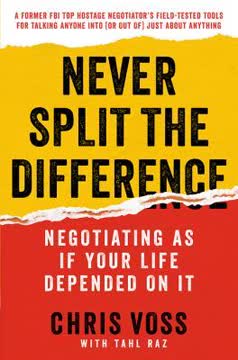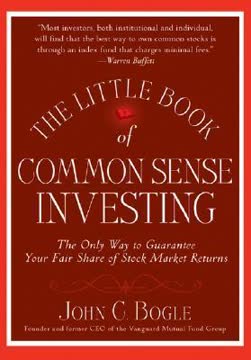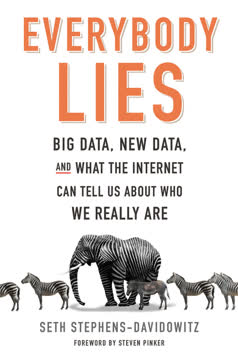Key Takeaways
1. Body Language Trumps Words: Actions Speak Louder
We believe it when we see it!
Nonverbal dominance. In face-to-face communication, body language accounts for 55% of the message's impact, tone of voice 38%, and the actual words only 7%. This means that how you look and sound is far more important than what you say. When there's a conflict between your words and your nonverbal cues, people will almost always trust what they see and hear over what you say.
Congruence is key. For effective communication, your words, tone, and body language must align. Incongruence creates "cognitive dissonance," where the receiver feels a conflict between what they hear and what they see, leading to distrust. For example, if a CEO says, "We've had a great year," but looks and sounds defeated, the audience will believe the nonverbal cues, not the words.
The receiver is in charge. The message is ultimately interpreted in the audience's mind, not yours. Therefore, focus on sending clear, congruent nonverbal signals that are easy for the receiver to understand. Remember, it's not about you; it's about the audience.
2. The Primal Brain: Fear and Fight-or-Flight Responses
First and foremost, take a negative view.
Hardwired for paranoia. Our brains are naturally wired to prioritize survival, leading to a default mindset of pessimism. This "fight-or-flight" response is triggered by uncertainty and perceived threats, causing physical reactions like increased heart rate, shallow breathing, and a tendency to freeze or flee.
The GrotesquePlane. Dropping your hands below your waistline (the GrotesquePlane) triggers this primal stress response, making you appear weak, submissive, or aggressive. This posture also reduces oxygen intake, leading to a dull voice and a lifeless look. Traditional presentation training often makes this mistake by advising speakers to keep their hands by their sides.
Counteracting fear. To counteract this, keep your hands above your waistline, which signals confidence and control. Recognize that your audience mirrors your nonverbal cues, so managing your own stress response is crucial for creating a positive atmosphere.
3. The TruthPlane: Center Yourself for Trust
Gestures on a horizontal plane extending from the navel.
The power of the navel. The area around your navel is your physical center of gravity and a key point for managing stress. Gesturing within the horizontal plane extending from your navel (the TruthPlane) creates a feeling of calm, balance, and confidence. This is because it aligns your body's mass with its center of gravity.
Breathing and balance. Placing your hands in the TruthPlane also promotes deeper, more balanced breathing, which helps regulate your stress response. This, in turn, affects your vocal tone, making it sound more trustworthy and calming.
Universal signal. Gestures in the TruthPlane are universally understood as a sign of openness, honesty, and non-confrontation. By using this plane, you signal to your audience that you are there to give, not to take away, fostering trust and connection.
4. The In-Breath: Inspire with Your Body
Breathe … and remind yourself that this very moment is the only one you know you have for sure.
Oxygen and inspiration. Breathing in provides oxygen to the brain, fueling creativity and positive thinking. Conversely, breathing out tends to produce a more pessimistic and narrow perspective. By consciously focusing on the in-breath, you can create a more inspired and energetic state.
Mirroring effect. Your audience will unconsciously mirror your breathing patterns. By breathing in an inspired way, you can influence your audience to feel more open, positive, and receptive to your message. This is because we copy the feelings of others through our mirror neuron system.
Beyond the belly. The key is not just breathing from the belly, but to be on the in-breath, which means to have a physical feeling of more in-breath than out-breath. This creates a feeling of lightness, energy, and availability, making you more engaging and persuasive.
5. The PassionPlane: Ignite Action with Energy
Without passion you don’t have energy; without energy you have nothing.
Chest-level gestures. Gesturing with your hands at chest level (the PassionPlane) increases your breathing and heart rate, creating a feeling of excitement and energy. This is because the chest is a relatively safe area of the body, allowing for more expansive movement.
Motivation and action. The PassionPlane is ideal for communicating messages that you want to be seen as exciting, energetic, or even aggressive. It can motivate your audience to take action by mirroring your enthusiasm and feeling compelled to join in.
Controlled passion. While the PassionPlane is powerful, it can also be perceived as aggressive or melodramatic if not used carefully. Balance it with the TruthPlane to ensure that your message is both passionate and trustworthy.
6. Facial Cues: Read and Project Authenticity
Other men are lenses through which we read our own minds.
The face as a communicator. The face is a powerful tool for communication, capable of expressing a wide range of emotions through subtle muscle movements. However, it can also be used to conceal emotions, making it a complex source of information.
The DisclosurePlane. Keep your hands away from your mouth, as covering it can create a feeling of mistrust. Conversely, using your hands to funnel attention to your mouth can emphasize your words and create a sense of disclosure.
The ThoughtPlane. Gesturing at eye level can create a feeling of indecision or focus, depending on whether your hands are wide apart or close together. The center line of the body (the WheelPlane) can be used to create a feeling of decision.
The indeterminate smile. A gentle, slightly upturned smile with congruent eye muscles is the key to inviting an audience to listen. Slightly raised eyebrows signal recognition, and a head tilt shows that you are listening.
7. Symmetry and Clarity: Simplify for Impact
Simplicity is the ultimate sophistication.
Symmetrical gestures. Symmetrical gestures, where both sides of your body move in a similar way, are easier to understand and are perceived as more attractive. This is because they create a focal point and reduce cognitive dissonance.
Asymmetrical gestures. Asymmetrical gestures, where your left and right sides move differently, can create confusion and distrust. However, they can also be used strategically to devalue or create dissonance around certain ideas.
The power of simplicity. The more you try to bring yourself toward the essential form of a gesture, the more you will describe an archetype that others can innately understand and be drawn toward. Keep your movements simple and consistent for maximum impact.
8. Territory and Status: Control Your Space
You can have power over people as long as you don’t take everything from them.
Respect personal space. Avoid leaning on, touching, or standing too close to other people's objects, as this can be perceived as a territorial invasion. Instead, present yourself as someone who is there to offer resources, not take them away.
The power of provision. The person who controls the basics of survival (food, drink, light, heat) commands attention and status. Be the provider, not the taker.
Seating arrangements. Be mindful of how you arrange seating in a room. Avoid creating adversarial setups, and place key decision-makers in positions where they can best receive your message.
9. The Power of Acceptance: The YesState
The art of acceptance is the art of making someone who has just done you a small favor wish that he might have done you a greater one.
The need for acceptance. The most fundamental human need is to feel accepted. By projecting a physicality of total acceptance, you can create an atmosphere where others feel safe, valued, and open to your message.
The YesState. The YesState is a mental attitude of acceptance and positivity that is reflected in your body language. It involves open gestures, a gentle smile, a head tilt, and a focus on the TruthPlane.
The upper-hand handshake. When shaking hands, gently turn the other person's hand so that it is slightly over yours, and move your clasped hands toward your stomach area. This gives the other person a feeling of status and acceptance.
10. Physical Narrative: Move Your Audience
It is not the strongest of the species nor the most intelligent that survives. It is the one that is the most adaptable to change.
The power of story. To persuade and influence, you must take your audience on a journey through different emotional and intellectual states. This is achieved through a "physical narrative" that uses changes in your body language to move your audience.
The three-act structure. Like a Hollywood film, your communication should have a setup, an inciting incident, a confrontation, and a resolution. Use the TruthPlane for facts, the PassionPlane for excitement, and the GrotesquePlane for problems.
The Zeigarnik effect. Use the Zeigarnik effect to keep your audience engaged by creating suspense and delaying the solution. This will make them more receptive to your message.
Last updated:
FAQ
What is "Winning Body Language" by Mark Bowden about?
- Practical Guide to Nonverbal Communication: The book provides a comprehensive system for using body language to control conversations, command attention, and convey the right message in business and professional settings.
- Focus on Business Success: Bowden emphasizes how nonverbal cues can help leaders, managers, and professionals build trust, influence others, and achieve better outcomes in meetings, presentations, and negotiations.
- Science and Art of Body Language: The book blends scientific research, evolutionary psychology, and performance arts to explain why body language is so powerful and how to use it effectively.
- Actionable Techniques: Readers are given step-by-step exercises, case studies, and practical advice to immediately improve their body language and communication impact.
Why should I read "Winning Body Language" by Mark Bowden?
- Improve Communication Results: The book addresses the high failure rate of business communication and offers tools to stand out and be more persuasive.
- Build Trust Instantly: Bowden’s methods help you win trust quickly, which is essential for business relationships and leadership.
- Overcome Presentation Anxiety: The book provides strategies to manage nerves and project confidence, even in high-pressure situations.
- Gain a Competitive Edge: By mastering nonverbal communication, you can separate yourself from the crowd and achieve greater professional success.
What are the key takeaways from "Winning Body Language" by Mark Bowden?
- Nonverbal Trumps Verbal: People believe what they see more than what they hear; congruence between body language and words is essential for trust.
- The TruthPlane System: Gesturing in the horizontal plane at navel height (the TruthPlane) is the most effective way to engender trust and calm in yourself and your audience.
- Manage Your State: Techniques like breathing on the in-breath and using the PassionPlane (chest-level gestures) can inspire and energize audiences.
- Simplicity and Clarity: Symmetrical, simple, and consistent gestures are more powerful and attractive than complex or asymmetrical ones.
How does Mark Bowden define and use the "TruthPlane" in "Winning Body Language"?
- Definition of TruthPlane: The TruthPlane is the horizontal plane extending from the navel, where open hand gestures signal honesty, calm, and trustworthiness.
- Physiological and Psychological Effects: Gesturing in the TruthPlane centers your body, calms your nerves, and projects confidence to your audience.
- Universal Trust Signal: Across cultures and history, exposing the vulnerable belly area with open hands is a primal sign of non-aggression and authenticity.
- Practical Application: Bowden recommends using the TruthPlane in presentations, meetings, and even phone calls to align your nonverbal and verbal messages.
What is the "PassionPlane" and how does it motivate audiences according to "Winning Body Language"?
- Definition of PassionPlane: The PassionPlane is the horizontal plane at chest level, where gestures convey energy, excitement, and passion.
- Raising Heart Rate and Engagement: Gesturing in the PassionPlane increases your own and your audience’s energy, making your message more compelling.
- Use with Caution: Overuse or uncontrolled gestures in the PassionPlane can come across as aggressive or melodramatic, so balance with the TruthPlane for credibility.
- Motivating Action: The PassionPlane is ideal for calls to action, rallying teams, and expressing enthusiasm about future possibilities.
How does "Winning Body Language" explain the role of breathing and the "in-breath" in communication?
- In-Breath Inspires: Breathing predominantly on the in-breath supplies more oxygen, making you and your audience more open, creative, and receptive.
- Mirroring Effect: Audiences unconsciously mirror the speaker’s breathing patterns, so your inspired state can make them feel more positive and engaged.
- Out-Breath Deflates: Speaking on the out-breath can depress energy and close down possibilities, so use it strategically when you want to lower tension.
- Simple Exercise: Bowden provides exercises to help you experience the difference and train yourself to use the in-breath for inspiration.
What are the "GesturePlanes" and how do they structure body language in "Winning Body Language"?
- GesturePlanes Defined: Bowden introduces horizontal planes (GrotesquePlane, TruthPlane, PassionPlane, DisclosurePlane, ThoughtPlane, EcstaticPlane) that correspond to different psychological effects.
- GrotesquePlane (Below Waist): Gestures here signal stress, fear, or submission and should be avoided in presentations.
- TruthPlane (Navel): Signals trust, calm, and authenticity.
- PassionPlane (Chest): Conveys excitement and motivation.
- Higher Planes (Face/Head): Used for disclosure, thought, or ecstasy, but can be confusing or overwhelming if not used carefully.
How does "Winning Body Language" address the problem of incongruence and cognitive dissonance in communication?
- Incongruence Loses Trust: When body language and words don’t match, audiences trust the nonverbal cues over the verbal message.
- Cognitive Dissonance: Mixed signals create mental discomfort, leading people to rationalize or mistrust the speaker.
- Importance of Congruence: Consistent, aligned verbal and nonverbal messages are essential for credibility and influence.
- Practical Advice: Bowden provides exercises to identify and correct incongruent habits, ensuring your body language supports your message.
What strategies does Mark Bowden recommend for holding and directing audience attention in "Winning Body Language"?
- Use Predictable Patterns: The brain rewards predictability; establish clear, rhythmic gestures to keep audiences engaged.
- Vary Tension Levels: Move through eight archetypal levels of physical tension (from relaxed to total tension) to match and lead your audience’s emotional state.
- Employ the Rule of Three: Structure your narrative and gestures in three-part progressions (Fact, Care, Do) for maximum impact.
- Avoid Overcomplication: Simple, symmetrical, and clear movements are easier for audiences to follow and mirror.
How does "Winning Body Language" advise on using body language to influence group dynamics, territory, and status?
- Respect Territory: Be mindful of personal space, seating arrangements, and barriers (like tables or podiums) to avoid triggering defensive reactions.
- Raise Others’ Status: Use open, accepting body language (the YesState) and gestures that “give the upper hand” to make others feel valued and increase rapport.
- Manage Height and Proximity: Adjust your position to avoid dominating or intimidating others, and use proximity strategically to increase influence.
- Team Presentations: Ensure all team members display positive, supportive body language to project unity and strength.
What is the "Fact, Care, Do" structure in "Winning Body Language" and how does it move audiences?
- Three-Part Narrative: "Fact" (TruthPlane) presents the situation or problem; "Care" (PassionPlane) expresses emotional investment; "Do" (TruthPlane) outlines the action to take.
- Emotional Progression: This structure takes audiences on a journey from information, through emotional engagement, to a clear call to action.
- Physical Alignment: Matching your gestures to each phase amplifies the message and makes it more persuasive.
- Zeigarnik Effect: Leaving an idea unfinished (suspense) keeps audiences hooked and eager for resolution.
What are the best quotes from "Winning Body Language" by Mark Bowden and what do they mean?
- “We believe it when we see it!” – Emphasizes that visual cues outweigh verbal ones in building trust and credibility.
- “Make a choice, make it bigger, and keep it tidy.” – Encourages clear, decisive, and uncluttered body language for maximum impact.
- “The message happens in the audience’s head.” – Reminds communicators that meaning is constructed by the receiver, not just the sender.
- “Truth fears no question.” – Suggests that authentic, open body language can withstand scrutiny and builds lasting trust.
- “Attaching gestures that create feeling to narrative structure compels an audience through a progression of feeling.” – Highlights the power of combining physical movement with storytelling to move and influence audiences.
Review Summary
Readers praise Winning Body Language for its insightful and practical advice on nonverbal communication. Many found it valuable for improving presentation skills and understanding body language's impact on interactions. Some reviewers highlighted specific techniques they found effective. While most reviews were positive, a few critics felt the book was redundant or overly verbose. Several readers recommended it for professionals seeking to enhance their communication skills, particularly in business settings. Overall, the book received generally favorable reviews for its unique approach to body language.
Similar Books










Download PDF
Download EPUB
.epub digital book format is ideal for reading ebooks on phones, tablets, and e-readers.




